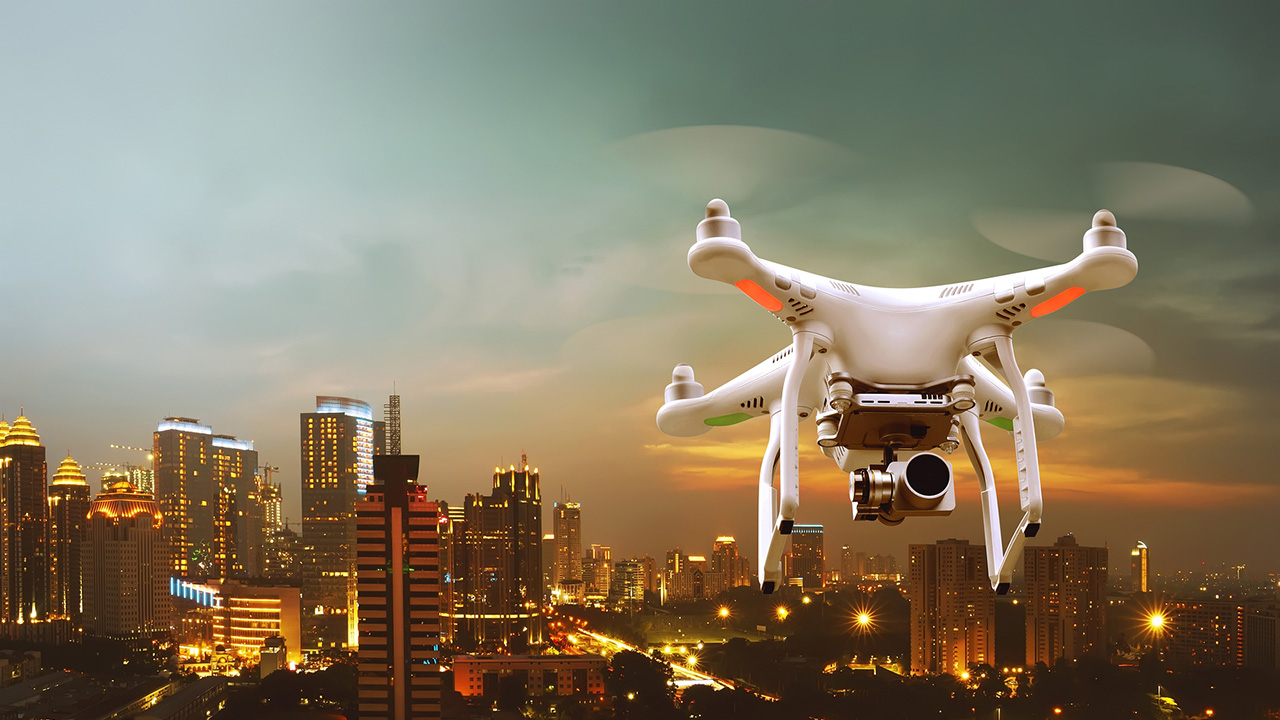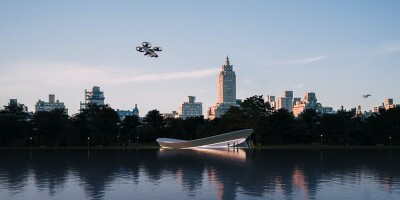Drones have become increasingly popular over the last few years, with many people and organizations fully adopting fully and integrating this technology in their way of doing business. Since Amazon made waves with the launch of its Amazon Air drone delivery service a few years ago, the list of businesses using UAVs has been growing as we speak.
From delivering pizza to aiding search and rescue missions to defusing bombs, drones have huge potential, sparing people from tedious, dangerous jobs that used to put millions of lives at risk. In this article, we'll take a look at some of the companies that have pioneered the use of this technology and how exactly they managed to do it effectively. Here are the top 5 companies that are using drones.
BBC
BBC News is one of those major media outlets that has always been open to implementing the newest technologies in their journalism.
BBC was the first media outlet to broadcast a royal wedding on television, back in the spring of 1960. The feat led to a huge scandal as a royal wedding was considered too ceremonious to be broadcasted on TV at the time. Over 20 million people tuned in to watch Princess Margaret (Queen Elizabeth’s only sibling) and Anthony Armstrong-Jones’ wedding.
In 2013, the hexacopters were first introduced by the crafty BBC producers at BBC World Service Language Services’ Global Video Unit to capture unique footage of the U.K.-based HS2 railway project. Since then, the team has been constantly experimenting with ways to seamlessly introduce drones into their journalism, piloting UAVs over war zones, natural disasters, and dangerous situations that required a helicopter.
However, some might say that the broadcast network was a little too enthusiastic about its drones – in 2015, three BBC journalists were brought in for questioning for
piloting a drone over a no-fly-zone in Davos, during the World Economic Forum. Nevertheless, it has been three years since the incident, so we can safely assume that the BBC has grown warier of its drone use – some events just do not require a drone for quality reporting.
EasyJet
From a
statistical standpoint, air travel is the safest mode of mass transportation. If you have ever heard someone saying that you are more likely to die in a road accident than a plane crash, that is actually true. The odds of dying in a car crash are roughly one in 5,000. If that sounds like something you can work with, wait until you find out the odds of dying in a horrible plane crash: one in 11,000,000. To put the number into perspective, you are more likely to be struck by lightning, with a
one in 13,000 chance.
But that does not mean there are no problems, ever. Fatal airplane accidents do happen, and when they do, the media tends to give them plenty of attention
because they are so rare. In fact, the reason air travel is so safe is that everybody, from the mechanics and pilots to air hostesses and the driver that shuttles people to the planes do their due diligence. The easiest way to spot any damage is by taking a top-down approach – starting from the exterior and gradually advancing toward the interior of the plane.
But humans are prone to error. Which is why in 2015, EasyJet together with unmanned-aircraft developer Blue Bear Systems Research made headlines with their at-then truly novel demonstration, which involved inspecting an Airbus 1320 airliner inside a hangar at Luton, England,
with a drone. After the successful presentation, EasyJet promised that drones would be adopted on a wider scale for inspection purposes.
Fast forward to 2018: the company rolled out drone inspections. More specifically, drones are now used for checking the fuselage for lightning-strike damage. This is one of the most common hazards that commercial jets face – and the planes are built to withstand powerful strikes. However, lightning strikes can ruin little components such as the power feeder and fuel valves, so planes have to be checked at least twice a year for this type of damage.
While a human team can spend up to six hours following through the motions and inspecting the plane, a drone can reduce that time to a couple of hours. In Blue Bear’s operations director Gavin Goudie’s words, the shorter inspection time “means you return an aircraft to service in 2 hr. or begin a repair more quickly.” Therefore, if other companies were to follow EasyJet’s example and use drones as part of their maintenance routine, the age-old complaint about the flight being delayed might become a thing of the past.
DHL
When you think about drone delivery services, chances are Amazon would pop up in your mind. However, Amazon is
not the only company that is dabbling in drone delivery. Logistics services company DHL is making steady advancements in this still untapped market. Initially, the company launched a drone that could fly blood samples across a river.
They then upped the ante with a medication-delivery drone, after which they finally launched the third generation of their “Parcelcopter.” And in a field where medical emergencies are the norm, you can probably understand how important even a few extra minutes can be.
Said Parcelcopter model
was first tested in 2016, between January and March, for flying packages from Reit Im Winkl, a German community, up to a plateau located roughly 1,200 meters above sea level. For the test, the company hired members of the community, who brought the packages to the “Packstation,” DHL’s miniature version of a post office. As soon as the package was inserted, a drone grabbed hold of it and exited through a small opening in the roof.
The system was designed to be entirely automatic, with minimal human intervention. The DHL drone could deliver the package safely despite adverse weather conditions, in under eight minutes. It is worth mentioning that the same journey by road would have taken 30 minutes if you did not take into account other disruptive factors that might have delayed the delivery. The test, to everybody’s relief, was a success. The process was repeated 130 times, with the same result.
Back to our present day, DHL is still using drones to deliver all sorts of supplies with great success. In October 2018, the international logistics company
completed drone delivery trials in Tanzania, delivering medicines to an island in Lake Victoria via a redesigned Parcelcopter model. The results were even more impressive this time around – the drone completed a 60-km flight in just 40 minutes. The same journey on land would have taken about six hours, not counting the delays that usually occur due to the difficult terrain.
Shell
Nobody can dispute the advantages and utility that inspection drones bring to the worksite. Another company that makes full use of them is Shell. In this case, drones provide footage of areas that Shell workers struggle to reach physically. The team at Baton Rouge import terminal, for instance, uses a remotely operated aerial vehicle (a specialized sort of drone) fitted with a gas sensor to swoop around and check for any leaks or cracks in the structures.
As proof of the company’s willingness to integrate drones in every part of their business, back in 2017, Shell Canada
launched a pilot training program to teach pilots to operate the drones. The program is based on the belief that smart drone use can increase workplace safety and improve maintenance. “So, where we used to send people up in a crane, or erect scaffolding to go and see conditions on our systems, we can now send up a drone to do that,”
said Cindy Jamieson, digitalization lead for Shell.
In other words, jobs that were
traditionally dangerous for humans are now becoming safer thanks to drones.
Balfour Beatty
Another company that has begun integrating drones into their business is the U.K.-based Balfour Beatty. More specifically, the multinational infrastructure group uses drones in infrastructure inspection operations (bridges, roads, rails, and so on), as well as for the assistance of its engineers and architects on worksites.
According to the company, each drone is fitted with top-notch equipment, which allows ground teams to review the state of various projects to the tiniest detail. To ensure that the primary drone is operated safely, a second camera-equipped drone is deployed to film the primary drone in action. The use of drones in building projects can drastically reduce the risk of accidents and the potential costs and inconveniences caused to the members of the local community.
In September 2018, Bristol Live
ran a story about an on-going housing project in Wapping Wharf. The footage, which was shot by Balfour Beatty with a drone, shows the construction site in all its gory beauty.
That is a relevant example of a smart use of drone footage for both marketing and safety purposes as the eagle-eye view of the construction site gives engineers and architects an “out of the box” perspective of how the project is going. The project, which includes two buildings with 93 flats each – 49 shared ownership, 44 for private rent, is expected to be completed sometime next year.
Conclusion
Drones have far surpassed their reputation of tech oddities as their use by both average people and companies has now become the norm. Since Amazon first came up with the idea of including drones into its delivery services, many companies, such as the ones presented in this article, have come up with new and innovative ways to integrate UAVs into their businesses.
For instance, the BBC uses drones to improve its reporting and offer viewers spectacular perspectives of particular events, Shell deploys drones to unreachable spots to perform inspections, while DHL delivers supplies to hard-to-reach areas by air. The golden era of the drones has just begun, and we are likely to see many other companies finding even more genius ways to use this technology.
















Comments